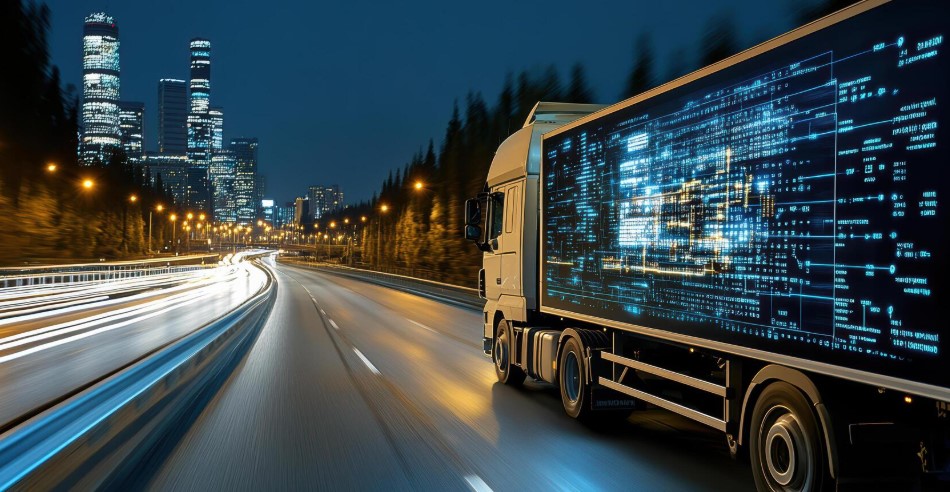Imagine saving hundreds of millions of dollars while delivering packages to millions of doorsteps every day. That’s the reality for UPS, thanks to its groundbreaking On-Road Integrated Optimization and Navigation (ORION) system. This innovative approach to transportation analytics has transformed how the logistics giant tackles delivery challenges, cutting costs and boosting efficiency across its vast network. Let’s explore how ORION’s use of mobility and transportation analytics, advanced analytics consulting, and advanced analytics solutions turned a complex problem into a game-changing success story.
The Challenge of Delivery Efficiency
UPS faces a monumental task: delivering over 20 million packages daily with a fleet of 125,000 vehicles. Rising fuel costs, traffic snarls, and unpredictable demand once made this a costly endeavor. In 2024, fuel expenses accounted for 28% of trucking operating budgets, a figure that hit hard as global demand for small package services grew by nearly 20% between 2020 and 2023. Traditional route planning, reliant on driver intuition and basic GPS, couldn’t keep up with these pressures, leaving room for inefficiency and wasted miles.
How ORION Revolutionized Route Planning
ORION stepped in as a beacon of innovation, leveraging transportation analytics to rethink delivery routes. Launched in 2013 and fully rolled out by 2016, this system uses mobility and transportation analytics to analyze over 200,000 routing options per driver daily, factoring in package details, traffic conditions, and even parking challenges. The 2024 upgrade, dubbed dynamic ORION, reduced driver routes by an average of two to four miles each, building on an earlier eight-mile reduction per driver. This tweak alone saved UPS 100 million miles annually, translating to $300 million in cost savings by 2025.
The system’s power lies in its advanced analytics consulting roots. Developed over a decade with input from operations research experts, ORION integrates data from GPS, vehicle sensors, and driver handhelds to create a digital twin of package flow. This real-time adaptability ensures routes adjust to sudden changes, think road closures or weather shifts—keeping drivers on the most efficient path. By 2024, 97% of UPS’s van fleet relied on this technology, proving its scalability and impact.
Real Results from the Road
The numbers tell a compelling story. UPS’s investment of $250 million in ORION has paid off handsomely, with savings exceeding $320 million by 2015 and projected to hit $400 million annually by 2025. Beyond dollars, the system cut fuel consumption by 10 million gallons yearly, slashing CO2 emissions by 100,000 metric tons. This dual benefit of cost reduction and sustainability resonates with customers and regulators alike, setting a new benchmark for the industry.
A standout example came during the 2024 holiday surge, when ORION helped UPS handle a 15% volume spike without adding vehicles. Drivers reported smoother days, with optimized stops reducing idle time by 20%. This efficiency boost didn’t just save money, it improved delivery times, earning UPS higher customer satisfaction scores in a competitive market.
The Technology Behind the Savings
At its core, ORION relies on advanced analytics solutions to process billions of data points. The Delivery Information Acquisition Device (DIAD) collects real-time inputs—package sizes, delivery windows, and traffic updates—feeding them into a proprietary algorithm. This tool, refined over years, balances consistency for drivers with cost-effective routing, avoiding non intuitive detours that save miles later in the day.
The 2025 enhancement, UPSNav, takes it further by offering precise entry points for deliveries, cutting last-mile inefficiencies. Paired with Network Planning Tools, which optimize package flow across facilities, ORION creates a seamless logistics ecosystem. This integration showcases how mobility and transportation analytics can turn raw data into actionable strategies, a lesson for any logistics operation.
Frequently Asked Questions
How does ORION adjust routes during traffic delays?
ORION uses real-time traffic data to reroute drivers instantly, ensuring minimal delays during congestion, as seen in its 2024 urban delivery performance.
What role do drivers play in ORION’s success?
Drivers provide on-the-ground insights that refine ORION’s algorithms, with 55,000 U.S. drivers contributing to its 2025 optimizations.
Can small fleets benefit from ORION-like technology?
Yes, smaller operations can adopt similar transportation analytics tools, though scaling requires investment, as UPS’s $1 billion annual R&D shows.
How often does ORION update its routes?
Routes refresh daily and adjust in seconds during shifts, a feature tested during UPS’s 2024 peak season.
How Can Ascend Analytics Help with My Business Needs?
Ascend provides expert support in mobility and transportation analytics, offering advanced analytics consulting to optimize trucking and logistics operations, enhancing efficiency and reducing costs.
Is Route Optimization the Future of Logistics?
The UPS ORION system proves that smart transportation analytics can redefine logistics. Its ability to slash costs, reduce environmental impact, and enhance service offers a roadmap for the industry. As fuel prices climb and demand grows, the need for advanced analytics solutions like ORION will only intensify.
Ready to transform your trucking and logistics operations? Contact Ascend Analytics for a FREE consultation to explore how mobility and transportation analytics and advanced analytics consulting can drive your success.








